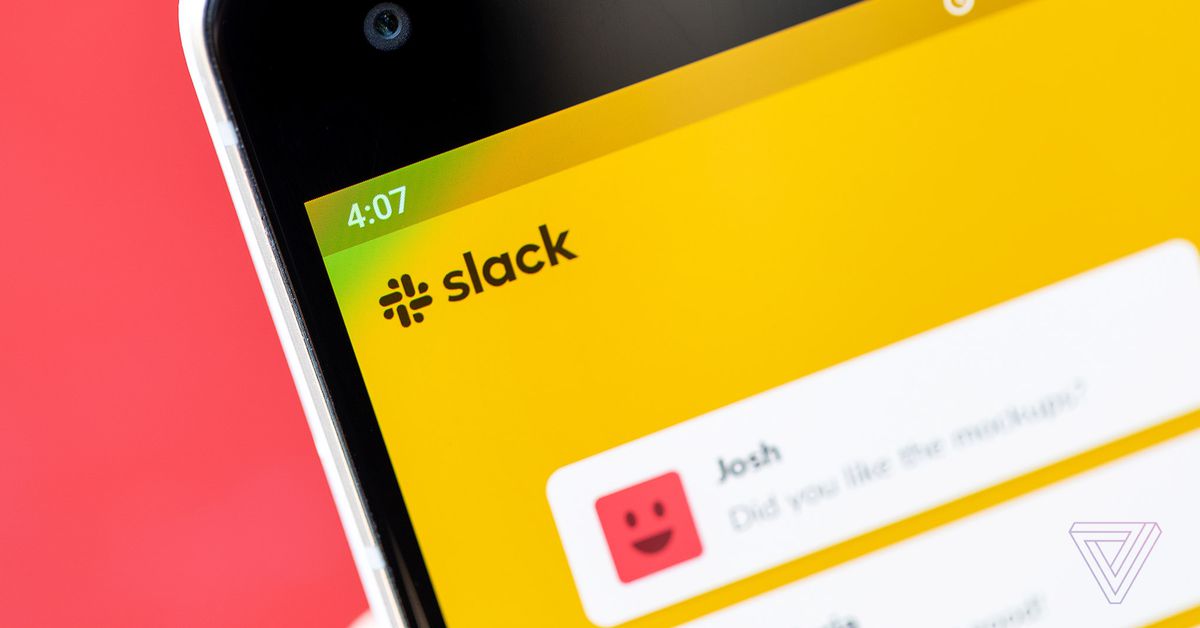
:Slack’s mobile apps have always valiantly tried to replicate the desktop and web experience with a single home screen and a reliance on swipe-based navigation and cumbersome menus. But a new update the company is rolling out on its Android beta channel is introducing a “simpler, more organized” Slack with major visual and user interface changes.
The update’s biggest new feature is the navigation bar at the bottom that now lets you easily jump to various sections of the app without having to swipe, tap a tiny icon, or scan a menu of sometimes hard-to-read text.
The bar includes a home screen for laying out all of your channels, and from there, you can swipe right to access other workspaces or left to go back to the last channel you were looking at. Next to the home tab is now a dedicated DMs one for accessing private messaging, and after that is a mentions tab that more clearly organizes what used to be buried in the activity section of the app, which was only accessible by swiping right and tapping the button under your profile. At the far right end is a new “You” tab that pulls up your profile for setting your status and accessing settings. There’s also now a compose button for starting a new DM that floats in the bottom-right of the other three tabs.
This is poised to be a huge improvement over the current version of Slack on Android, which tends to bury features and access to vital parts of the app under annoying icon taps and drop-down menus.
In the current public version of Slack, quick access to the channel panel requires you to either tap the workspace icon in the upper-left corner or swipe from the left. But the swipe only works if you’re not using the new Android Q gesture system, which controversially remapped that gesture to a universal back button. Features like accessing the dedicated direct message tab or seeing your workspaces are buried under the Home screen menu and only after you swipe to expose it. (Navigation and ease of use on Slack mobile are only slightly improved on iOS, which doesn’t have a navigation bar but does have more robust swiping options for accessing various parts of the app with a single finger and without button presses.)
In other words, the new Slack should be a lot faster and easier to use than what we have now, once people get used to how it works. It’s not clear when Slack intends to roll this out to the public version of its Android app or if there are other changes it intends to make before it does so. But you can access the latest beta version here through the Play Store.
